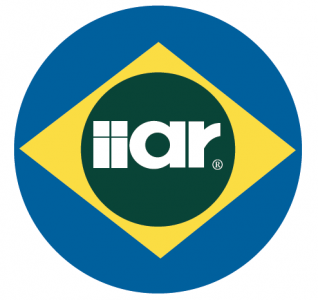Standard 9 has been revised – Here’s what you need to know!
The first edition of IIAR Standard 9 was published in 2020. Consistent with the document title, “Standard for Minimum System Safety Requirements for Existing Closed-Circuit Ammonia Refrigeration Systems”, Standard 9 lays out the minimum requirements that all systems must adhere to, regardless of when they were built.
The original publication of Standard 9 required facilities to evaluate their system against the requirements of the document within five (5) years of the document publication date. A problem arose, however, because the publication date was not listed in the original edition of Standard 9.
To remedy this (and a few other minor issues), the standard was amended this year. The updated version is ANSI/IIAR 9-2020 Addendum A (2024). The first full revision of the standard is scheduled for 2025, at which time the standard will be named ANSI/IIAR 9-2025.
Here is a summary of the important changes introduced by Addendum A:
- §1.3 is a new paragraph requiring that the first system evaluation be performed by January 1, 2026, and subsequent revalidations be conducted every five (5) years.
§1.3.1 – An initial safety evaluation shall be conducted for each ammonia refrigeration system to ensure that it complies with the minimum system safety requirements specified in IIAR 9 no later than January 1st, 2026.
§1.3.2 – The safety evaluations shall be revalidated at least every five (5) years.
- §1.4 is another new paragraph that explains how to handle conflicts between Standard 9 and the codes and standards that governed the initial design and installation. In short, this section requires the more restrictive standard to be adhered to. §1.4.1 states that when the initial governing code or standard is more restrictive, it must be followed (with two exceptions listed). When Standard 9 is more restrictive, §1.4.2 mandates that it be adhered to.
The noteworthy exception to following the “more restrictive standard” relates to machinery room exhaust ventilation. §1.4.1 clarifies that §7.3.13.2 (“Exhaust Ventilation”) is the minimum requirement for machinery room ventilation fans regardless of the codes and standards in effect when the system was built. - The original edition of Standard 9 addressed windsocks in §7.2.9.5. All text related to windsocks has been removed and this section has been repurposed to lay out the minimum requirements for posting “Emergency Contact Information”. This information was formerly required in §7.2.10 “Emergency Shutdown Documentation” which had several additional requirements, all of which have been redacted in Addendum A.
§7.2.9.5 – The information for whom to contact in an emergency shall be readily accessible.
- §7.3.3.3 has been revised to only address valves that are part of the system emergency shutdown procedure and to explicitly allow the use of a “remote-actuated manual operator” as a means of emergency valve activation.
§7.3.3.3 – Manually operated system emergency valves identified as being part of the system emergency shutdown procedure that are inaccessible from floor level shall be operable from a fixed permanent work surface, or by use of a chain or a remote-actuated manual operator that shall be readily accessible from the floor or a permanent work surface. Ready access and clearance to operate the valves while wearing emergency response personal protective equipment shall be provided.
- §7.3.13.2 has been modified in two ways. First, the requirement that a monitored location be notified upon loss of power to the ventilation system has been scrapped. Second, the requirement for fans to be “non-sparking” has changed. The initial edition of Standard 9 required that all fans in the machinery room be non-sparking. §7.3.13.2(2) of Addendum A now allows non-emergency fans to be non-sparking or interlocked with the detection system to de-energize at 150 ppm.
Other, more subtle changes in Addendum A include:
- The scope of the standard has been revised in §1.2.1 to apply only to ammonia refrigeration systems used in industrial occupancies.
§1.2.1 – Existing stationary closed-circuit vapor compression refrigeration systems using ammonia as a refrigerant in industrial occupancies shall comply with this standard.
- Several of the document year/editions of the normative references listed in Chapter 3 have been updated.
- Due to §7.2.10 being shortened and moved to §7.2.9.5, the paragraphs that follow, while unchanged, have been renumbered.
- §7.2.11 (“Equipment Enclosures”) has been changed to §7.2.10.
- §7.2.12 (“General Safety Requirements”) has been changed to §7.2.11
- Rather than repeating the initial and revalidation safety evaluation requirements in Chapter 8, §8.3 has been modified to reference §1.3.1.
- The explanatory information in Appendix A has been revised to include a flowchart in A.1.4 to assist in determining which standard to follow when conflicts exist between Standard 9 and the original governing codes and standards.
- The explanatory information related to machinery room ventilation activation has been revised in A.7.3.12.2(2) to remind readers that where NFPA 70 (NEC) is enforced, machinery room emergency ventilation systems must activate at 150 ppm to maintain an unclassified hazardous location designation. The minimum requirement in §7.3.12.2(2) requires activation at 1,000 ppm.


Leave a Reply